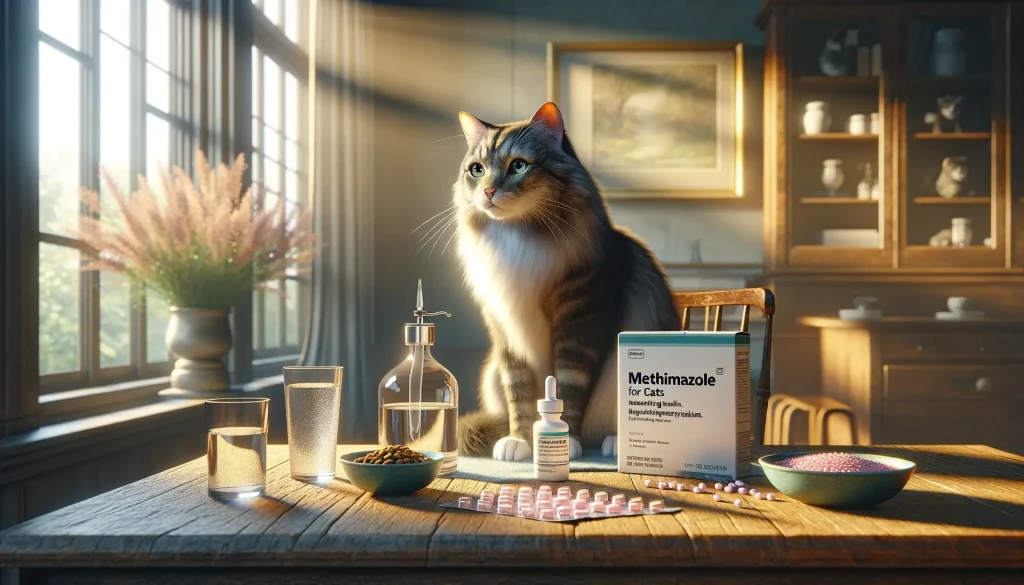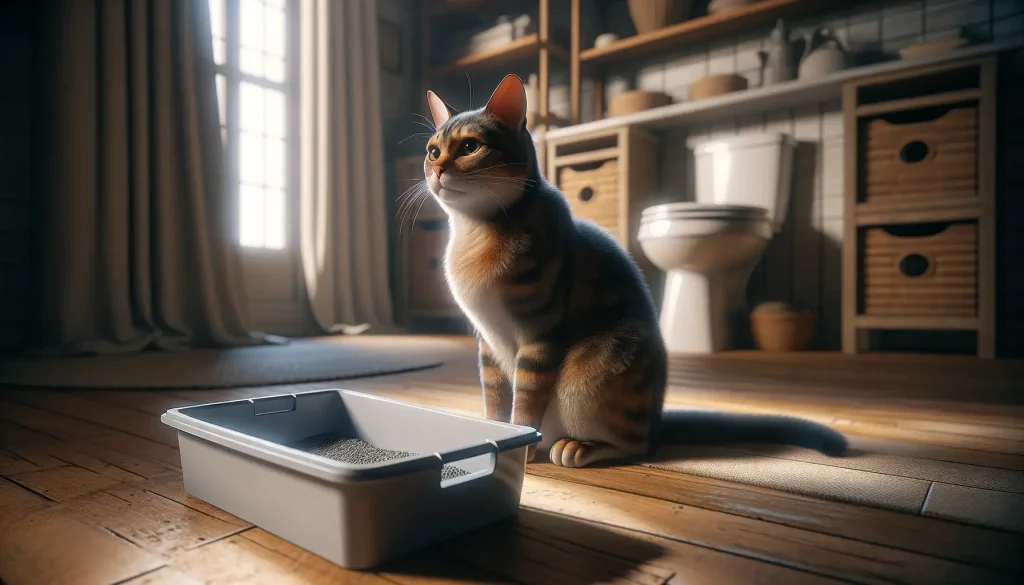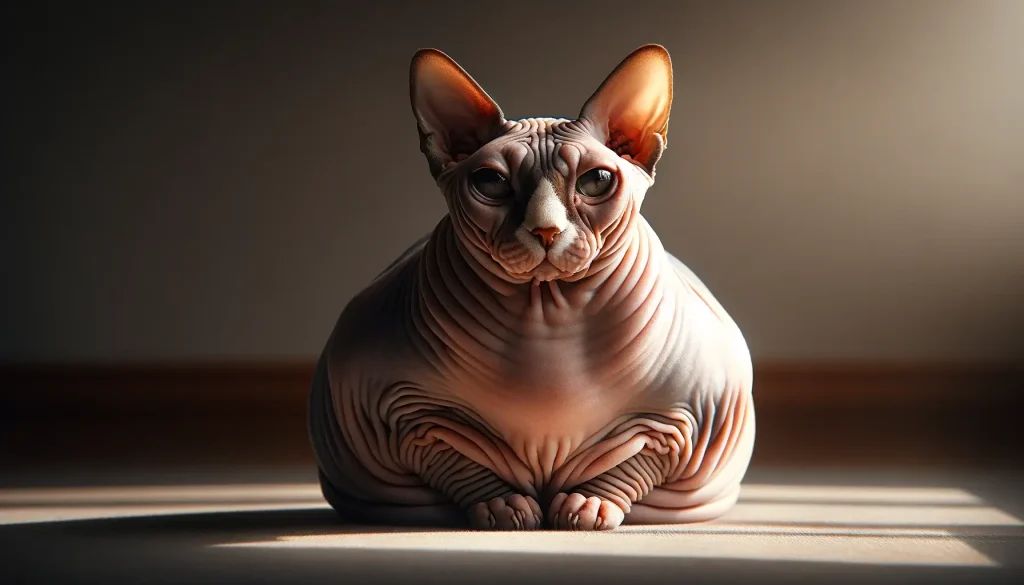
When it comes to a Sphynx cat, images of a sleek, skin-bare feline might first come to mind. However, the health and care needs of a fat Sphynx cat can differ significantly from its slimmer counterparts. Given their lack of fur, Sphynx cats have unique care requirements to begin with, and these needs become even more pronounced with overweight individuals. Obesity in pets, including Sphynx cats, is a growing concern, mirroring human trends. In fact, a recent study found that over 50% of cats are either overweight or obese, leading to numerous health risks such as diabetes, liver disease, and joint problems.
Caring for a fat Sphynx cat involves a combination of diet management, regular exercise, and specific skin care. Their lack of fur means their skin can accumulate oils faster than furred breeds, necessitating more frequent baths. But, when a Sphynx is overweight, reaching all areas of their body during bathing can become a challenge. Additionally, their diet needs careful attention. The right balance of nutrients not only supports weight management but also skin health. Exercise, too, plays a crucial role in shedding those excess pounds.
This guide will delve into the essentials of managing your fat Sphynx’s health, offering tips on diet, exercise, and skin care. By understanding and implementing these care elements, you can help your pet lead a healthier, more comfortable life.
FAQs on Caring for Your Fat Sphynx Cat
Caring for a fat Sphynx cat comes with specific challenges and questions. Here are some commonly asked questions that can provide further insights into ensuring your pet remains healthy and happy.
What Should I Feed My Fat Sphynx Cat?
Feeding your Sphynx cat a balanced diet is crucial. High-protein, low-carb diets work well, especially those formulated for weight management. Always measure your cat’s food portions to avoid overfeeding and consult your vet for a diet plan that suits your cat’s specific needs.
How Often Should I Bathe My Overweight Sphynx?
Given their quick oil build-up, bathing your Sphynx every 1-2 weeks is recommended. For overweight cats, pay extra attention to cleaning folds and hard-to-reach areas to prevent infections and irritations. Use gentle, cat-friendly products to protect their skin.
What Kind of Exercise Is Best for My Sphynx?
Exercise is vital. Encourage play with toys that stimulate hunting behaviors, such as feather wands or laser pointers. Create a cat-friendly environment with climbers or scratching posts. Keep play sessions short but frequent to avoid overexertion.
How Can I Tell If My Sphynx Cat Is Obese?
Identifying obesity involves checking for visible waistlines and feeling for excess fat around the rib area. Cats are generally considered obese if they are 20% over their ideal body weight. Your veterinarian can provide a precise assessment.
Can Obesity in Sphynx Cats Lead to Other Health Issues?
Yes, obesity can lead to several health problems, including diabetes, heart disease, and joint issues. Overweight Sphynx cats may also struggle more with temperature regulation due to their lack of fur. It’s essential to address obesity early to prevent these complications.
Remember, every Sphynx cat is unique, and what works for one may not work for another. Always seek advice from a professional veterinarian when making health and care decisions for your pet.
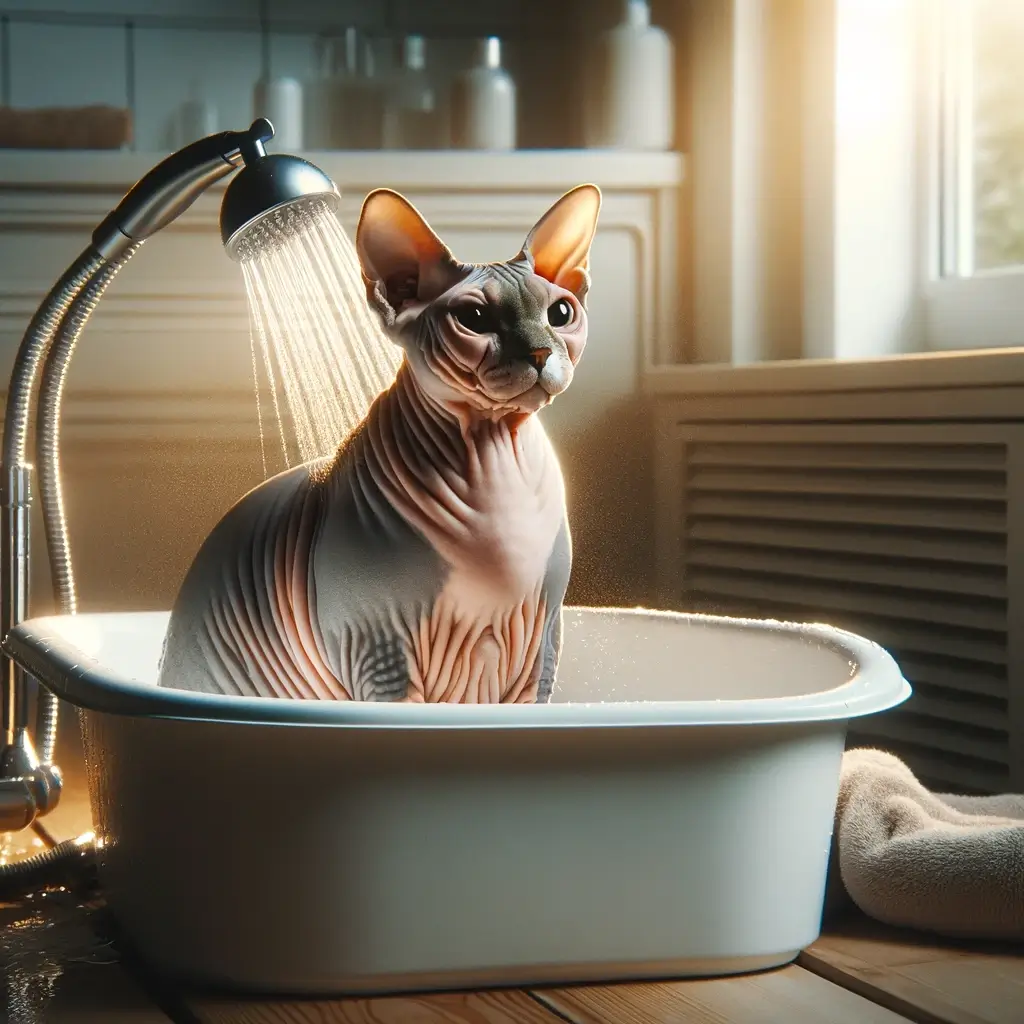
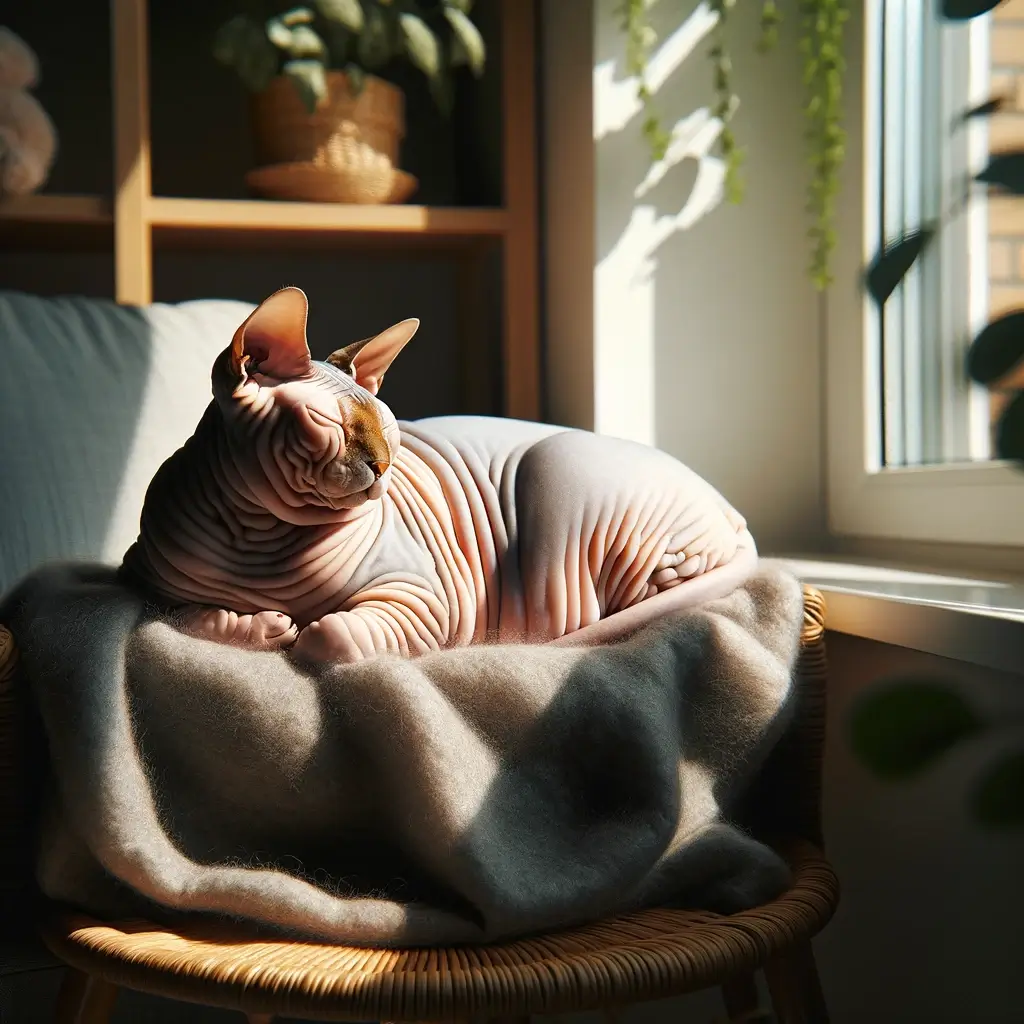
Fun Facts About Your Fat Sphynx Cat
Let’s dive into some interesting and amusing facts about Sphynx cats. These quirky and loveable pets have more to them than meets the eye!
- Sphynx cats are not actually hairless. They have a fine peach fuzz over their body, which gives them a unique texture that’s often compared to warm suede.
- Despite the common belief, Sphynx cats are not hypoallergenic. They produce normal levels of Fel d1, the primary allergen in cats, through their saliva and skin.
- The Sphynx cat is known for its high metabolism. This trait helps them stay warm but also means they may require more food than the average feline, a fact to consider when managing a fat Sphynx cat.
- These charismatic cats often appear to “sweat.” Without fur to absorb their natural oils, a Sphynx cat can leave oily residues on surfaces they sleep or lay on.
- Sphynx cats tend to be very social and energetic. They are known for their clown-like behavior, enjoying performing for their humans.
- The first known Sphynx cat was born in 1966 in Toronto, Canada, due to a natural genetic mutation. Since then, the breed has been selectively developed through crossbreeding with normal-coated cats.
- Contrary to their often royal demeanor, Sphynx cats love warmth and will seek out sunny spots, laps, or snuggle with other pets to keep cozy.
These fascinating facts about Sphynx cats shine a light on why they’re such a beloved pet. Their unique needs, including managing obesity, make them a special addition to any family. Knowing more about them can help ensure you provide the utmost care for your fat Sphynx cat.
Weight Management for Your Sphynx Cat
Managing the weight of your fat Sphynx cat is key to ensuring their health and happiness. A correct diet and exercise regimen is essential.
- Consult with a Veterinarian: A vet can provide a personalized diet and exercise plan suited to your cat’s needs.
- Monitor Food Intake: Use a measuring cup for food to prevent overfeeding. Consider wet food to help with hydration and fullness.
- Daily Playtime: Incorporate interactive toys to motivate movement and stimulate your cat’s hunting instinct.
By addressing these skin care needs, you’ll contribute significantly to the overall well-being of your fat Sphynx cat.
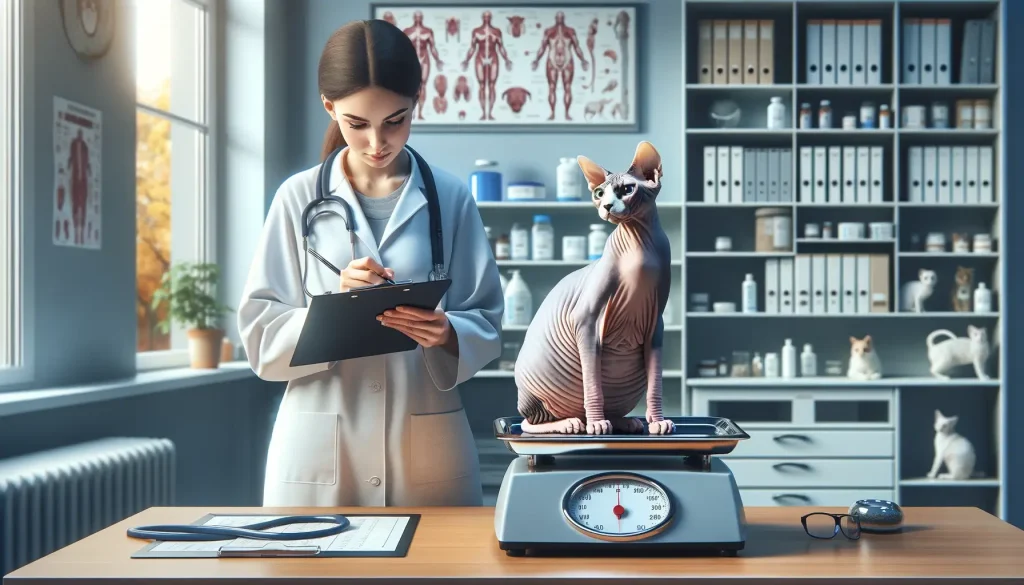
Regular Health Monitoring and Vet Visits
Regular health monitoring and veterinary visits are crucial in managing a fat Sphynx cat’s health. Here’s what to focus on:
- Weight Checks: Frequent weight assessments help track your cat’s progress towards a healthier weight.
- Comprehensive Exams: Annual or bi-annual vet exams can catch potential health issues early.
- Consult Nutritionists: A veterinary nutritionist can tailor a diet plan to your cat’s specific needs.
By taking these measures, you ensure that your Sphynx retains optimal health, even in the face of obesity challenges.
Understanding the intricacies of caring for a fat Sphynx cat allows you to provide the best possible care. With proper diet, exercise, and skin care, your Sphynx can enjoy a long, healthy, and happy life.
Preventing Obesity in Sphynx Cats
Maintaining an ideal weight for your Sphynx cat is essential in preventing obesity and its associated health risks. Here are practical tips for diet and exercise:
- Measure Meals: Control caloric intake by measuring your cat’s food portions, according to your vet’s recommendations.
- Choose the Right Food: Opt for high-protein, low-carb cat food that is formulated for weight control and monitor the treats.
- Interactive Play: Engage your Sphynx in daily interactive play sessions to encourage movement and activity.
- Environmental Enrichment: Use cat trees, scratching posts, and perches to motivate natural climbing and jumping behaviors.
These strategies help manage and prevent obesity, promoting a healthier lifestyle for your Sphynx cat.
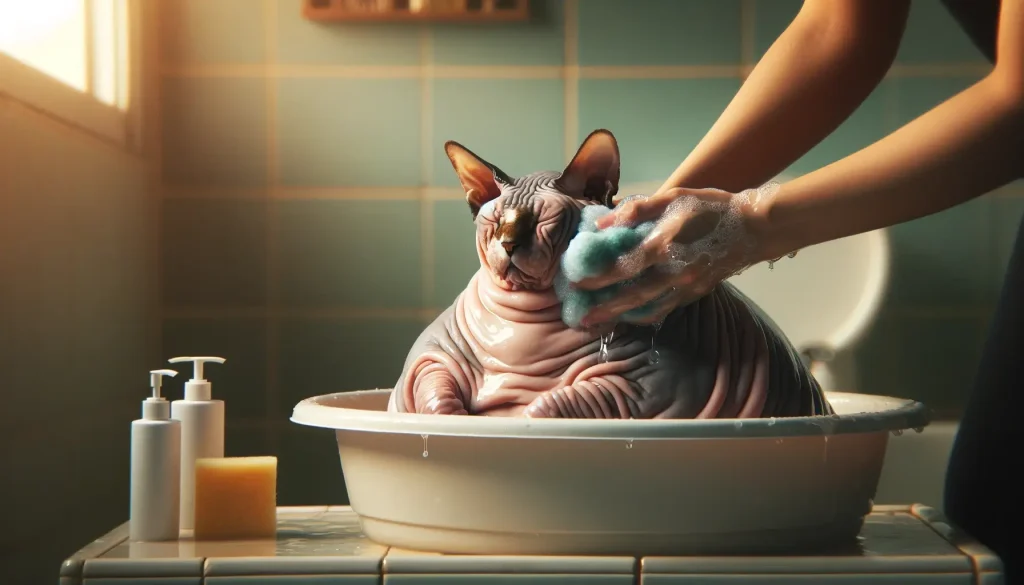
Overweight Sphynx Cat Skin Care
Skin care for an overweight Sphynx cat presents unique challenges. The absence of fur means direct exposure of skin, which in overweight cats, can lead to skin folds that harbor bacteria and yeast. Maintaining skin health under these conditions requires dedicated care:
- Regular Baths: Bathing your Sphynx every 1-2 weeks helps manage oil buildup. For overweight cats, use a soft cloth to gently clean skin folds.
- Hypoallergenic Products: Invest in gentle, hypoallergenic grooming products to avoid skin irritation.
- Vet Checks: Regular veterinary dermatology check-ups can help prevent skin infections and complications arising from obesity.
Creating a Stimulating Environment for Your Sphynx
Stimulation is crucial for a Sphynx cat, especially one that’s overweight. A stimulating environment keeps them active and promotes weight loss.
- Cat Trees and Scratching Posts: These offer opportunities for climbing and scratching, encouraging physical activity.
- Interactive Toys: Toys that move unpredictably mimic prey and can engage your cat for hours.
- Companion Play: If possible, having another pet can provide social interaction and additional activity.
Beginner Guide to Raising Quail at Home
What are the Signs of a Dog Concussion?
What Causes Your Dog’s Ears to Smell Bad?
When your dog’s ears start to emit an unpleasant odor, it might leave you puzzled…
Methimazole Treatment for Cat Hyperthyroidism
Methimazole plays a crucial role in managing feline hyperthyroidism, a condition marked by an overactive…
Got Hummingbirds in your Backyard? Here’s How to Care for Them.
Why Does Your Cat Pee Outside the Litter Box?
Cat’s Litter Box Issues It’s not uncommon for cat owners to face the frustrating dilemma…



